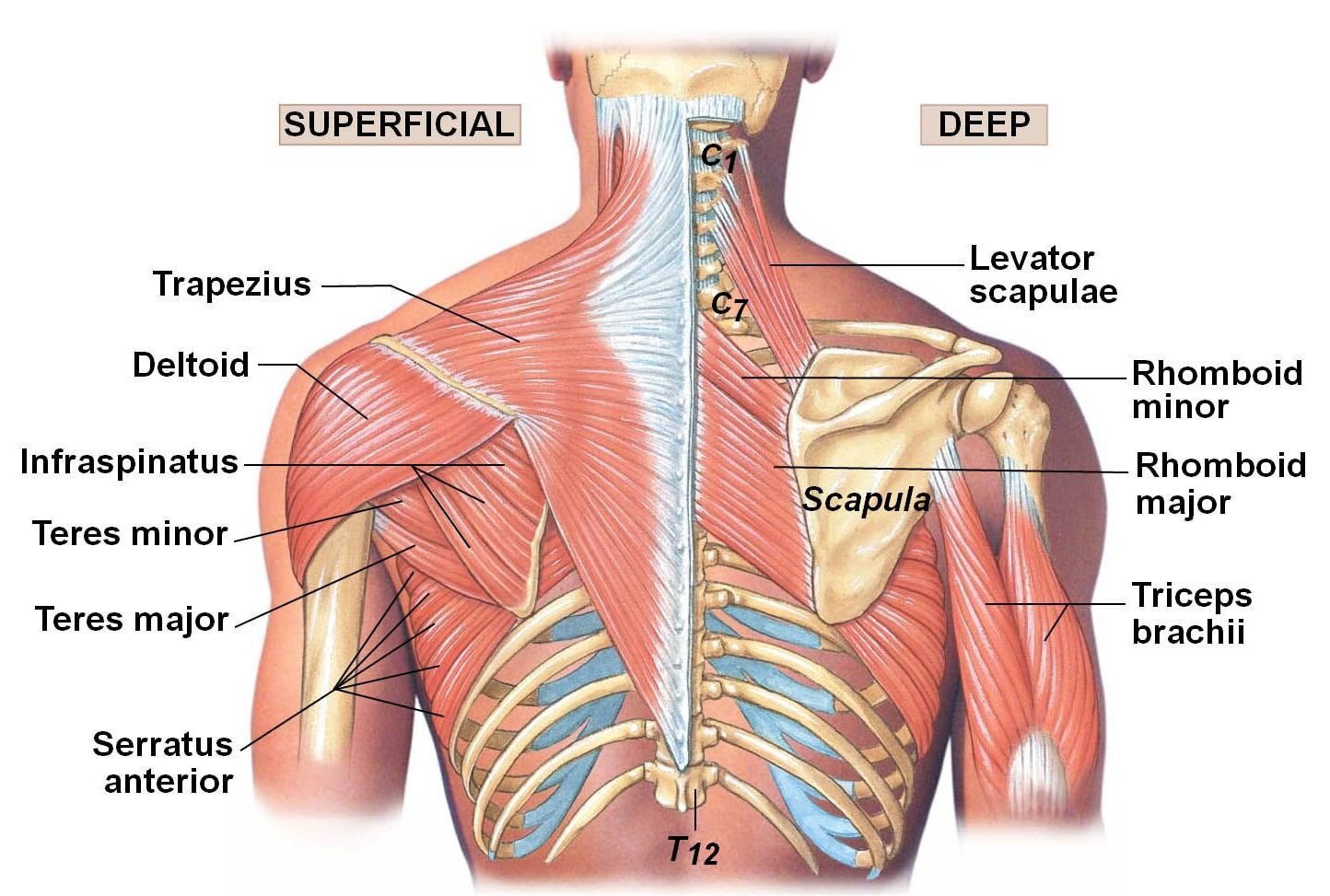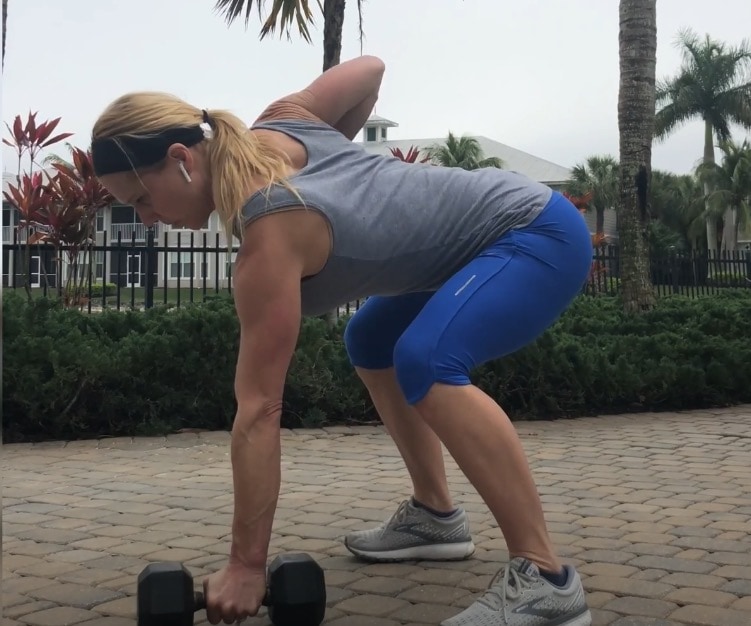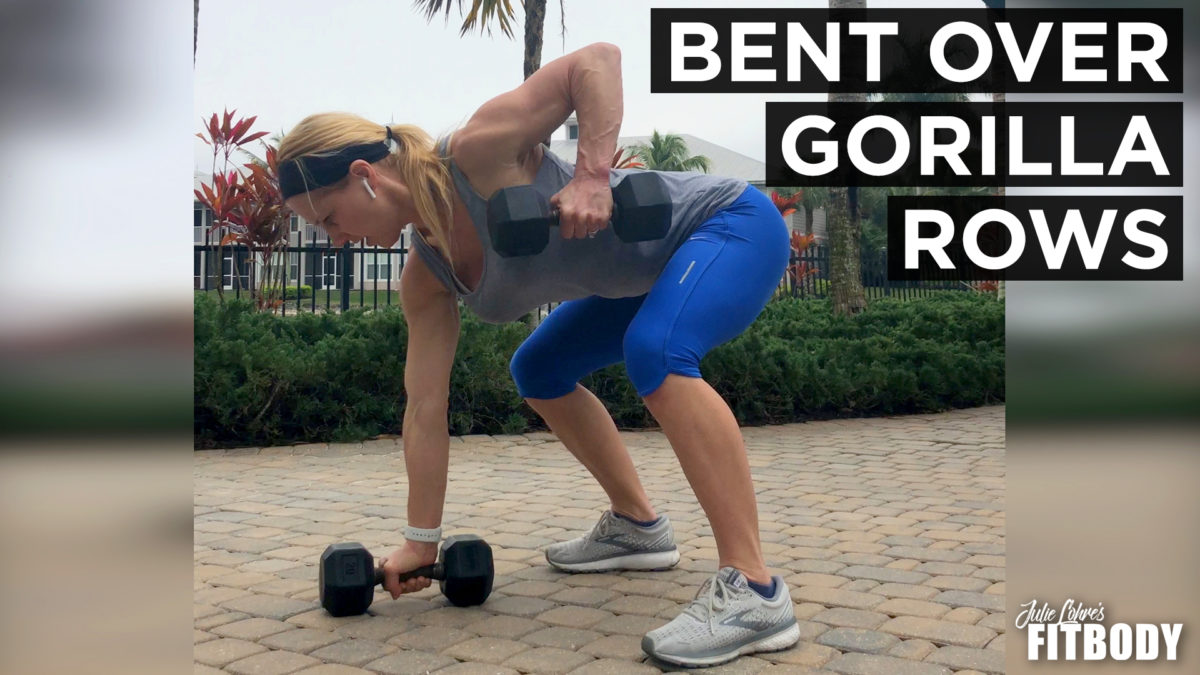Gorilla Rows Exercise with Dumbbells
The gorilla row, a highly effective exercise in the realm of strength training, is known for its ability to sculpt and strengthen the back muscles while engaging the core. This dynamic movement predominantly targets the latissimus dorsi, commonly known as the lats, which are the broadest muscles in the back and play a crucial role in the movement of the shoulders. Additionally, it engages the rhomboids, situated between the shoulder blades, essential for retracting and elevating the scapula. The trapezius muscles, or traps, which extend from the neck to the mid-back, are also significantly worked out during this exercise.
These muscles are key in various movements of the scapula and contribute to the overall posture and stability of the upper back. By performing the gorilla row, individuals not only enhance the aesthetic appeal of their back but also improve functional strength, which is beneficial for a range of daily activities and other athletic endeavors.

How To Do Bent Over Gorilla Rows
I like to do a gorilla row with alternating arms.
- To get set up, place your kettlebells or dumbbells slightly narrower than hip-width apart on the ground with the handles parallel to your feet.
- Stand with your feet shoulder-width apart just behind the weights.
- Begin the movement by bending your knees slightly and hinging forward from your hips.
**Julie’s Tip – While hinging forward at your hips, keep that core nice and firm, with a flat lower back. This should be similar to a deadlift stance and your shoulders should be square and facing forward.- Place your hands on the weight handles and with one side, raise the weight to your side in a rowing motion. Keeping the lifting side elbow close to your body, concentrate on squeezing the shoulder blades together during the movement.
** Julie’s Tip – At the top of the row, give your shoulder blades an extra squeeze and hold the movement for a moment **- Slowly and with control return the weight to the ground and alternate lifting the weight on the other side with the opposite arm.
Gorilla Row Exercise – Photo Illustration




What equipment do I need to do Gorilla Rows?
While I like to do the gorilla rows with dumbbells, they can also be done with a kettlebell or other weighted object. I have even had online training clients with no workout equipment use a gallon jug filled with water to the appropriate weight!
How many gorilla rows should I do?
I recommend starting with 2-3 sets of gorilla rows for 8 – 10 reps using a weight that is challenging. As you become more proficient with the movement, you can increase the sets to 4. If your primary goal is to gain muscle mass, then use a heavier weight and stick in the 6-8 reps range. If your goal is to maintain lean mass and strengthen the back muscles without adding thickness, then use a weight where you can safely complete 4 sets of 10-12 reps.
Do gorilla rows make your waist smaller?
Gorilla rows not only strengthen the core, arms, and back, but they also can create an illusion of a smaller waist by developing back muscles that visually reduce your waist size.
By consistently incorporating gorilla rows into your fitness routine, you can strengthen and develop the muscles in your upper back. As these muscles grow and become more defined, they can create an illusion of a smaller waist. This is not due to an actual reduction in waist size, but rather the visual contrast between a well-developed back versus your narrower midsection.
Gorilla rows help improve posture and promote a more balanced physique. By strengthening the back muscles, they can counteract the forward rounding of the shoulders, which can make the waist appear wider. As a result, a more upright and aligned posture will contribute to a perception of a smaller waist.
Achieving a smaller waist requires a combination of consistent exercise, including both strength training and cardiovascular exercises, along with a healthy diet and overall body fat reduction.
Is there an advantage to doing a gorilla row in the full bent over position versus standing more upright?
Yes, there is a significant difference between performing a gorilla row in a full bent-over position versus a more upright stance, and these differences can influence the exercise’s effectiveness and focus.
- Muscle Activation: In the full bent-over position, there is increased activation of the lower back muscles (erector spinae) along with the targeted upper back muscles like the lats, rhomboids, and traps. This position demands more from the stabilizing muscles to maintain proper form, which can lead to a more comprehensive back workout.
- Range of Motion: The full bent-over position typically allows for a greater range of motion in the row. This can lead to more significant muscle engagement and development, as the muscles are working through a more extensive stretch and contraction.
- Intensity and Focus: Being fully bent over places more emphasis on the upper back muscles, as it eliminates much of the support that an upright position provides. This makes the exercise more challenging and can lead to greater strength gains in those areas.
- Risk of Strain: However, the full bent-over position can increase the risk of strain on the lower back, especially if the exercise is performed with improper form or with excessive weight. It’s crucial to engage the core muscles and maintain a neutral spine to reduce this risk.
- Upright Position Advantages: Standing more upright can reduce the strain on the lower back and may be better for individuals with lower back issues. It also slightly shifts the focus of the exercise, potentially engaging the middle and lower traps to a greater extent.
Ultimately, the choice between these positions should be based on your goals, fitness levels, and any pre-existing conditions. I always recommend starting with lighter weights to master the form and gradually increase the intensity as strength and confidence build.
Find out more about Online Personal Training with Julie


